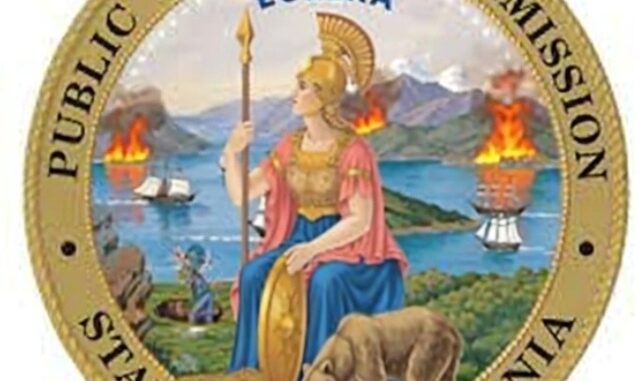
In a move that has sparked widespread criticism, Governor Gavin Newsom signed a historic package of bipartisan legislation on September 19, 2025, aimed at addressing California’s escalating energy challenges.
Among the provisions is the replenishment and expansion of the California Wildfire Fund, effectively allowing utility companies like Southern California Edison to access this $21 billion fund—half of which is funded by state taxpayers—to cover costs related to wildfires and fines.
Critics have labeled this as a bailout for utilities, shifting the financial burden of poor management and wildfire liabilities onto everyday Californians already struggling with sky-high energy costs.
This development comes amid a broader pattern of energy policies that have driven electricity, gasoline, and diesel prices to the highest in the nation, while Net Zero ambitions threaten the state’s oil infrastructure.
The United States cannot achieve energy dominance with Gavin Newsom’s energy policies in place for the largest state economy in the US.
Still live in California and have a Tax issue? Do you have a Tax Burden in 2025?
The Soaring Cost of Electricity: A Policy-Driven Crisis
California’s electricity rates are among the highest in the United States, with residents paying nearly double the national average in many cases.
This isn’t a fluke—it’s the direct result of a series of aggressive energy policies that prioritize environmental goals over affordability and reliability. Key culprits include massive investments in wildfire mitigation, which have cost ratepayers over $27 billion between 2019 and 2024 alone, as utilities like PG&E and Edison harden infrastructure against climate-driven fires.
The state’s cap-and-trade system, part of its broader climate agenda, adds layers of costs by imposing fees on carbon emissions, which are passed directly to consumers.
Additionally, California’s ideological push toward renewables—solar, wind, and batteries—has led to utility overspending and grid instability, shunning reliable baseload sources like natural gas and nuclear.
Rising demand from electrification efforts, such as EV mandates, combined with infrastructure upgrades and global fuel price volatility, exacerbate the issue.
As a result, high electricity bills are increasing poverty rates, with California’s already the highest in the nation, and impeding the very climate goals they aim to support by making clean energy transitions unaffordable for many.
State budget constraints limit relief options, leaving Governor Newsom and lawmakers with few tools to curb these runaway costs.
Instead, policies continue to pile on, with little regard for the economic strain on households and businesses.
Gasoline and Diesel Prices: The Highest in the Nation, Thanks to Taxes and Regulations
It’s not just electricity—California drivers face the steepest gasoline and diesel prices in the country, often exceeding $5 per gallon for regular unleaded and even higher for diesel.
The primary drivers? Punitive taxes and environmental fees that add up to $1.26 per gallon, including state excise taxes, local fees, and costs tied to California’s unique low-carbon fuel standards and cap-and-trade program.
Refinery outages, like the recent Chevron El Segundo fire, highlight the state’s vulnerability, as California relies on a shrinking number of in-state refineries producing a specialized, cleaner-burning gasoline blend that can’t be easily imported.
Global crude oil prices and unplanned shutdowns amplify spikes, but policies mandating ultra-low-sulfur diesel and phasing out fossil fuels increase production and distribution costs.
Farm leaders warn that these could push prices to $8-$10 per gallon, threatening agricultural viability and the broader economy.
Annual inflation adjustments, such as the 1.6 cents per gallon increase starting July 1, 2025, ensure prices keep climbing, all in service of climate goals that disproportionately burden working families.
Taxpayer-Funded Bailouts: Utilities Tap into Public Coffers for Fines and Failures
The newly signed legislation takes this a step further by permitting utilities to draw from the State Wildfire Fund to pay for wildfire-related fines and damages.
Established in 2019, the fund was meant to protect ratepayers and support survivors, but the fine print in bills like SB 254 now allows companies like Edison to bill customers for excesses beyond the fund’s limits—effectively a double dip into public pockets.
This comes after years of utility negligence contributing to devastating fires, with taxpayers now footing the bill for corporate shortcomings.
Net Zero’s Toll on Oil Infrastructure: Millions in Monthly Losses
California’s aggressive Net Zero policies, mandating carbon-free emissions by 2045, are dismantling the state’s oil infrastructure.
A recent policy shift is projected to slash refining capacity by 17% by 2026, forcing greater reliance on imported fuels and exposing the state to geopolitical risks.
Pipelines, like the one shuttered since a 2015 spill, face ongoing stop-work orders, further crippling operations.
These mandates are already causing significant financial hemorrhaging, with reports indicating losses exceeding $2 million per month for key oil infrastructure due to reduced output, regulatory hurdles, and the push to sever petroleum dependency.
While recent compromises with Big Oil aim to stabilize supplies and avoid immediate price surges, the long-term trajectory points to economic disruption as the state prioritizes emissions reductions over energy security.
Detailed Analysis of California Senate Bill 254 (SB 254)Introduction
California Senate Bill 254 (SB 254), authored by Senator Josh Becker and signed into law by Governor Gavin Newsom on September 19, 2025, represents a comprehensive legislative effort to address the state’s escalating electricity costs, wildfire risks, and clean energy transition challenges.
Enacted as an urgency statute, it took immediate effect to stabilize utilities, protect ratepayers from higher bills, and support California’s ambitious climate goals, including 100% clean energy by 2045.
The 136-page bill amends multiple sections of the Public Utilities Code, Public Resources Code, and other statutes, focusing on public financing for transmission infrastructure, wildfire mitigation reforms, Wildfire Fund expansion, and enhanced oversight of utilities.
Proponents hail it as a landmark package that could save ratepayers billions annually through cost controls and efficient spending, while critics argue it undermines local governance, favors utilities, and fails to fully address past wildfire victims’ needs.
Background and Purpose
California’s electricity rates have surged dramatically over the past decade, with Pacific Gas & Electric (PG&E) rates increasing 104%, Southern California Edison (SCE) by 83%, and San Diego Gas & Electric (SDG&E) by 71%—far outpacing inflation and national averages.
This crisis stems from factors like wildfire mitigation expenses (over $27 billion since 2019), infrastructure upgrades for clean energy, and regulatory costs.
The 2019-established Wildfire Fund, capitalized at $21 billion (half from ratepayers), has faced depletion risks, as seen with potential claims from the 2025 Eaton fire.
Governor Newsom’s Executive Order N-5-24 directed agencies to review ratepayer-funded programs for cost-effectiveness, prompting CPUC recommendations on spending controls and equitable cost-sharing.
SB 254’s purpose is multifaceted: to rein in utility profits and rate hikes, boost oversight, accelerate clean energy infrastructure, and ensure the Wildfire Fund’s longevity.
It builds on prior laws like AB 1054 (2019), which created the Wildfire Fund, by introducing reforms to wildfire mitigation plans (WMPs), financing mechanisms, and permitting processes.
The bill emphasizes urgency to prevent utility bankruptcies, reduce borrowing costs, and support economic growth amid housing shortages and EV adoption.
Key Provisions
SB 254 introduces sweeping changes across several domains. Below is a breakdown of its major sections, based on amendments to existing laws:Public Financing and Ownership of Transmission InfrastructureAuthorizes the California Infrastructure and Economic Development Bank (I-Bank) to finance clean energy projects using funds from the 2024 Climate Bond Act (Proposition 4, allocating $850 million) and establishes the California Transmission Accelerator Revolving Fund for eligible transmission projects, with continuous appropriations.
Creates a Transmission Infrastructure Accelerator within the Governor’s Office of Business and Economic Development (Go-Biz) to coordinate with the California Independent System Operator (CAISO), develop financing strategies, and prioritize public-private partnerships that maximize debt financing for ratepayer savings.
Provides a 20% state tax credit (up to $20 million per taxpayer annually from 2026-2036) for qualified expenditures on transmission projects, prohibiting equity returns on credited portions.
Reactivates the defunct California Consumer Power and Conservation Financing Authority (CCPCFA) to finance, own, or construct new transmission projects, accessing accelerator funds.
These provisions aim to reduce costs by shifting from utility equity financing (which includes profit margins) to lower-cost public debt, potentially saving billions in transmission buildout expenses.
Siting and Permitting for Clean Energy Projects
Extends the AB 205 “Opt-in” certification program’s deadline to June 30, 2030, for streamlined CEC approvals of renewable energy and storage projects.
Requires CEC applications to include property rights evidence and authorizes demands for environmental review information; establishes a rebuttable presumption of net positive economic benefits to local governments.
Mandates CEC program-level Environmental Impact Reports (EIRs) for facility classes, allowing tiering by public agencies, and removes conformity findings for thermal plants and transmission lines under Public Resources Code §25545.8.
Extends contracting exemptions to July 1, 2027.
This streamlines permitting to accelerate clean energy deployment, addressing delays in meeting 2045 goals.
Wildfire Mitigation Reforms
Requires utilities’ WMPs to consider implementation time, risk reduction, and cost-per-avoided ignition; plans must be submitted every four years to the Office of Energy Infrastructure Safety (OEIS), with preliminary versions tied to CPUC general rate cases (GRCs) starting 2027.
Mandates OEIS approval/denial within nine months, integration into GRCs, and revised WMPs conforming to CPUC revenue authorizations; enhances OEIS oversight and CPUC enforcement.
seuc.senate.ca.gov
Extends WMP requirements to publicly owned utilities (POUs) and electrical cooperatives after January 1, 2026.
Provides CEQA exemptions for undergrounding plans and repeals the Wildfire Safety Advisory Board.
These changes emphasize cost-effectiveness and accountability in mitigation spending.
Wildfire Fund Reforms and Continuation Account
Creates a Wildfire Fund Continuation Account (up to $9 billion in bonds via the Department of Water Resources) for post-effective-date wildfire claims, with utilities electing participation.
Mandates 50/50 replenishment cost-sharing between shareholders and ratepayers (via nonbypassable charges from 2029-2045), with potential $3.9 billion additional contributions over five years.
Allows utilities to access the fund for eligible claims and requires reimbursement for disallowed costs; requires a 2026 report on alternative catastrophe models.
This effectively expands the fund to about $18 billion (separate from the original $21 billion), shifting half the burden to shareholders to prevent depletion and reduce ratepayer exposure.
Additional Provisions
Grants utilities right of first refusal on property insurers’ subrogation rights for wildfire claims, with nondisclosure agreements exempt from public records laws.
Authorizes CPUC financing orders for recovery bonds on “just and reasonable” wildfire costs, with ratepayer credits for disallowed expenses.
Prohibits including the first $6 billion (beyond AB 1054’s $5 billion) of fire risk mitigation capital expenditures in equity rate bases after January 1, 2026 (expires 2035), allowing debt financing instead.
Requires annual CPUC reports on 10-year historical data for utility assets and returns on equity/debt.
Mandates CPUC evaluation of executive incentives tied to energization targets by 2027, enforcement policies with penalties, and independent audits of utility practices (repealed 2032).
Enhances the Dig-Safe Board for better excavation notifications and infrastructure planning.
Implications For Utility Companies
SB 254 benefits investor-owned utilities (IOUs) like PG&E, SCE, and SDG&E by providing access to an expanded Wildfire Fund, reducing bankruptcy risks and borrowing costs through financial stability.
Credit agencies like Fitch note positive implications for utility ratings due to the Continuation Account and 50/50 replenishment, which caps shareholder exposure while allowing debt-financed mitigation.
However, restrictions on equity rate basing for $6 billion in expenditures limit profits, and enhanced oversight (e.g., tied WMPs and audits) increases accountability for spending and performance.
Criticisms
Opponents, including local governments (California State Association of Counties, League of California Cities), the Utility Wildfire Survivor Coalition, and SDG&E, criticize the bill for weakening local control through the opt-in program, allowing projects to ignore safety standards and community input.
The Coalition argues it violates AB 1054 promises by excluding 2015-2018 PG&E fire victims from full compensation.
Labor groups like the Utility Workers Union oppose potential operational issues, and some analyses question whether the 50/50 split truly shields ratepayers from future hikes.
Broader critiques view it as favoring Big Utilities, potentially shifting costs to taxpayers amid ongoing high energy prices.
How Much Longer Can We Survive These Policies?
As California barrels toward Net Zero, the cumulative impact of these “horrific” energy policies—skyrocketing bills, taxpayer bailouts, and crumbling infrastructure—raises a dire question: How much longer can residents, businesses, and the economy endure? With poverty rising and energy reliability faltering, the state’s green dreams risk turning into a nightmare of blackouts, shortages, and financial ruin. California’s massive political corruption has become a national security risk, putting President Trump in a horrible position of trying to keep our military prepared and able to defend the West Coast. The diesel, gasoline, and jet fuel needed for our military and commercial trucking have become jeopardized, with over 70% of their oil now imported from foreign countries.
As Governor Newsom blames Climate change for the Palisades fires, you have to ask, how many of the fires were set by arsonists, and why are the homes not rebuilt by now? Why are they rezoning the area to multi-home dwellings set up for apartments? There are way too many questions, as this appears to be a land grab by the wealthy.
For more in-depth coverage on California’s energy woes, check out Energynewsbeat.co for a wealth of articles exposing the realities behind these policies.
Got Questions on investing in oil and gas? Or do you have a Tax Burden in 2025?
Crude Oil, LNG, Jet Fuel price quote
ENB Top News
ENB
Energy Dashboard
ENB Podcast
ENB Substack






